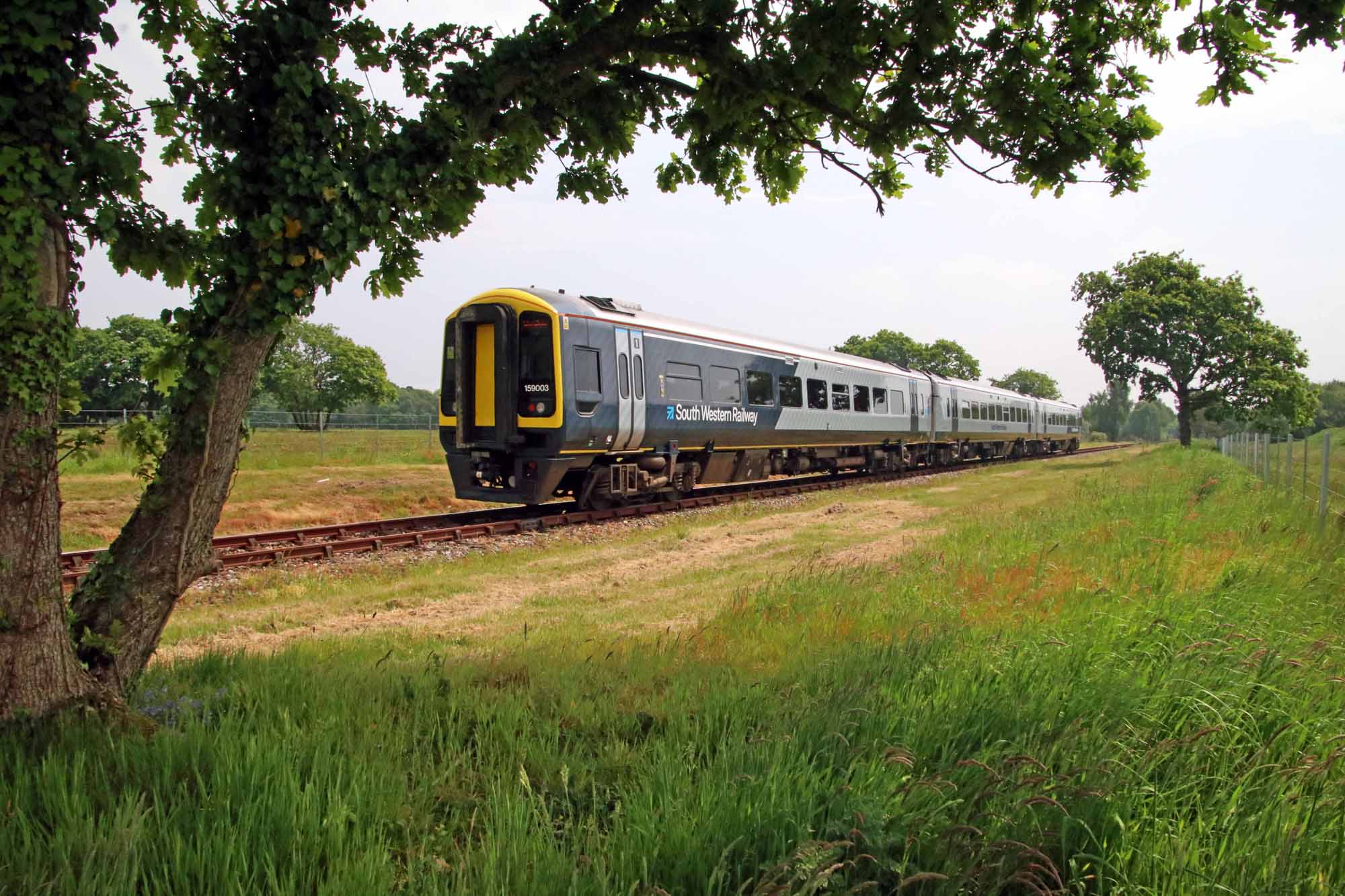
With the aim to leverage renewable energy and reduce its carbon footprint, Network Rail has collaborated with Riding Sunbeams to use solar panels to power trains in south-east England and launched the first pilot scheme.
On a sunny Wednesday morning on 17 July, commuters passing through Aldershot station witnessed something unusual on the platform. Passengers were greeted by representatives from South Western Railway service and Riding Sunbeams, a project set up to deliver solar powered railways, who are giving out information about a pilot being trialled in the south-east of England.

Discover B2B Marketing That Performs
Combine business intelligence and editorial excellence to reach engaged professionals across 36 leading media platforms.
In this scheme, the trains will be powered by solar panels directly from the railway system as opposed to distributing it to the grid. Existing equipment – repurposed from outside the rail sector – will be used to connect solar to the high voltage system that supplies dc rail traction substations with power from the grid. Solar panels will be erected along the network, rather than on the trains themselves, and feed power directly to trains via built for purpose substations and storage facilities. Project Manager of Riding Sunbeams, Clair White said: “We had many experts and engineers working who were ready to take up the challenge and make this happen.”
The project called First Light is a collaboration between Riding Sunbeams and climate change charity 10:10, Community Energy South and Network Rail, alongside a cohort of engineering and renewable energy consultants, Birmingham University and the University of Bristol. “It was very important to build relationships with the organisations as they were all helping the First Light project to come to reality. It’s a big team that was involved,” White continues.
Riding Sunbeams commissioned studies in six locations starting 2017 – all in south-east England – for pilot solar traction farms to examine the feasibility of the idea.
But to get the idea off the ground, there were a few challenges facing the operation. For instance, the equipment needed to test the solar panels simply didn’t exist in the consumer market. Developing new equipment for the railway requires time and is a multi-million pound process, it took 18 months to get to the stage it is today.

US Tariffs are shifting - will you react or anticipate?
Don’t let policy changes catch you off guard. Stay proactive with real-time data and expert analysis.
By GlobalDataIn terms of funding, the project secured circa £350,000 from Innovate UK in its First of a Kind competition which took place in January 2019. This will ensure the project has the money needed for its operation until November. “So up until November we can prove the concept and say ‘yes it works, safe to use’ and we can continue to grow from there,” said White. The company will then be looking for funding from investors and aims to become self-funded in the near future.
Furthermore, Riding Sunbeams also secured financial support from the French Providence amounting to £100,000 which was used to set up the business. Elsewhere, the RSSB invested money for the research and development of using solar and other renewables for the railway operation in Wales.
Proof of concept could lead to wider adoption
Looking ahead, if the Riding Sunbeams project is integrated into UK railways safely and successfully, it will prove that solar projects can be implemented in the wider network of railways. “By 2020, we hope to be in a position to help build and connect the world’s first ever full-scale, community-owned solar traction farm to the railways,” White says, adding that in the future Network Rail can then buy electricity from those community-owned solar farms for its trains.
Given the UK’s weather conditions and the dearth of enough sunshine, the questions is will investing resources into solar-powered trains be a gamble? White says to counter this issue, Riding Sunbeams will be trialling technologies from the wind as well as batteries.
South Western Railway has a goal to reduce carbon emissions by 56% in its network and using solar panels could be a significant step towards that. Energy Manager of South Western Railway, Costas Panagiotakopoulos says: “For us this is really important because the energy for our trains are clean.”
“If this is viable, we can expand to doing this on a commercial scale, do a PPA (power purchase agreement) with Network Rail and do something big. But we need to see where it goes in the future. We have sustainability at the heart of our business and it is our priority,” says Panagiotakopoulos.





